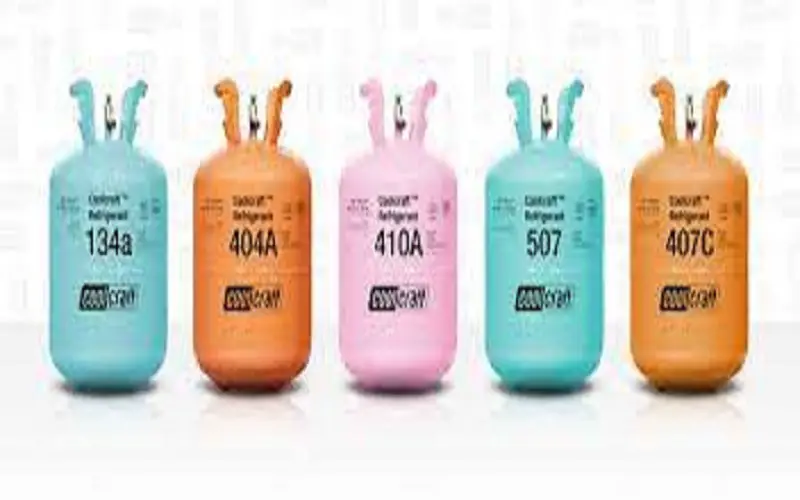Refrigerant 32, or R32 as it’s known to its friends, is a pretty big deal in the world of air conditioning and refrigeration. Used in millions of systems worldwide, R32 has a host of characteristics that make it pretty darn popular. But what is it exactly and why should you care?

Table of Contents
Introduction to Refrigerant 32
Well, R32 is a type of hydrofluorocarbon (HFC) used in HVAC systems. Why? Because it’s pretty good at absorbing and releasing heat, which is kinda important when you’re trying to cool down a room on a hot summer’s day. Oh, and its lower global warming potential makes it a better environmental choice than some other refrigerants. But that’s just the tip of the iceberg…
Detailed Look at R32 Refrigerant
Let’s roll up our sleeves and get into the nitty-gritty of R32. We’re talking chemical composition, characteristics, and where it’s used. Because who doesn’t love a good deep dive into chemistry, right?
Refrigerant 32 Details
R32, or Difluoromethane if you want to get technical, is a colorless gas that’s really good at transferring heat. In an AC system, R32 absorbs heat from the indoor air and releases it outside, leaving you with a nice, cool room. Ahh, bliss.
R32 Refrigerant Chemical Name
Ever thought about why R32 is called Difluoromethane? It’s all about the molecules, my friend. You see, R32 has two fluorine atoms and one carbon and hydrogen atom each. Hence, Difluoromethane. Simple when you know how, right?
R32 Refrigerant Material Safety Data Sheet (MSDS)
Safety first, folks. According to the MSDS, R32 is a bit of a mixed bag. On the one hand, it’s not considered harmful if you inhale it in small amounts. But on the other hand, it’s pretty flammable, so you wouldn’t want to light a match around it.
Refrigerant 32 Pressure
One thing that’s important to know about R32 is that it operates at a higher pressure than some other refrigerants. But what does this mean for you? Well, it means your AC system has to work a bit harder, but it also means you get cooler air, faster. Cool, huh?
Comparisons and Contrasts: R32 vs. R410A
Let’s get ready to rumble! In the red corner, we have R32, and in the blue corner, we have R410A. Let’s see how they stack up…
Performance Comparison: R32 and R410A
When it comes to cooling performance, R32 takes the cake. It’s not only more efficient but also has a higher cooling capacity than R410A. But, R410A isn’t without its merits – it’s less flammable, which can be a big plus depending on how you’re using it.
Environmental Impact: R32 vs R410A
And what about the environment? Well, R32 has a lower global warming potential than R410A. That means it’s less harmful to the environment if it’s released into the atmosphere. But remember, no refrigerant is good for the environment if it’s not handled properly.
Refrigerant 32 Phase Out
Despite all its perks, R32 is being phased out in some places. Why, you ask? Well, even though it’s better than some alternatives, it’s still not perfect. Let’s find out more…
Reasons for R32 Phase Out
So why the phase-out? Well, despite having a lower global warming potential than some other refrigerants, R32 still isn’t great for the environment. And then there’s the flammability issue. So, some countries have decided to say “thanks, but no thanks” to R32.
Click here to read more about refrigerants – – Articles on Refrigerants: The Ultimate Guide to Understanding Them
Implications of R32 Phase Out
But what does this mean for you? Well, if you’re in a country that’s phasing out R32, you might need to switch to a different refrigerant in the future. That could mean upgrading your whole AC system, which is not exactly pocket change.
Refrigerant 32 Flammability
Let’s talk about the elephant in the room: R32 is flammable. But before you start panicking, let’s break down what that actually means…
Understanding R32 Flammability
R32 is classified as a “mildly flammable” refrigerant. That means it can catch fire, but only under specific conditions. So, while it’s not as safe as non-flammable refrigerants, it’s also not as dangerous as some other flammable substances. Feeling better?
Safety Precautions with Flammable R32
So how can you stay safe? The key is to handle R32 properly. That means not exposing it to open flames or high heat sources and making sure it’s installed by a professional. Because safety is no joke, folks.
Conclusion
So there you have it, everything you ever wanted to know about R32. It’s a powerful refrigerant with some big perks, but also some important drawbacks. As always, the key is to make informed choices and prioritize safety. After all, who doesn’t want a cool, comfortable, and safe home?